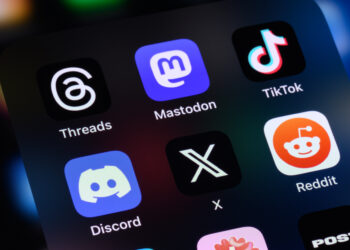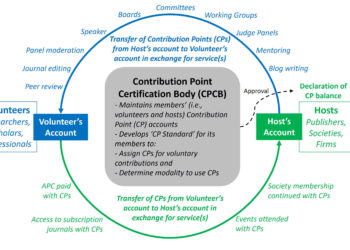Libraries are not strangers to e-books; such companies as eBrary, Questia, and NetLibrary have been around for some time — though perhaps it is significant that all these operations changed ownership in the past year: to ProQuest, Gale/Cengage, and EBSCO, respectively.
But it is just over 3 years now since e-books became hot items — specifically, on November 19, 2007, when Amazon launched the aptly named Kindle. Apple had launched the iPhone six months before, but the Stanza ereader, a simply superb application that “crossed the chasm,” running on the iPhone, did not appear until the summer of 2008. That’s a period so long ago that it deserves a hifalutin name like “Pleistocene” or “Jurassic,” but we may have to settle for a portmanteau like “Bezosphere.” The iPad, a whopping one year old now, is, among other things, an exceptionally good e-reader and is now inspiring a generation of copycat and wannabe tablets.
The asteroid that slammed into the earth and killed off the dinosaurs did not have a bigger impact than a clutch of engineers in Seattle falling on the head of Johannes Gutenberg.
Librarians as a matter of course have wanted to bring the new generation of e-books into their collections, but they have been largely stymied. There are several reasons for this, and it’s worthwhile to consider what those reasons are, as the problem of making e-books available through libraries is a vexed one for which no one has yet offered a wholly satisfactory solution. The situation is made even more difficult in that many people seem to believe that this is an easy problem to solve and that only the stupidity and cupidity of publishers prevent librarians from doing what they have always done before, but this time in digital form.
As Mencken said, for every complex problem there is an answer that is clear, simple, and wrong.
This matter has reached dramatic proportions in the last few weeks as one of the major trade publishers, HarperCollins, made a change in the terms of service for its ebooks that has resulted in a public relations nightmare. Unlike some of its brethren in trade publishing, HarperCollins has indeed been allowing libraries to lend its e-books, but with the newly announced policy, a library can only lend a title 26 times, at which point the license with the publisher will expire.
Is 26 a big number or a small one? It depends. Academic libraries report that approximately 40% of the books in their collections never circulate; indeed, most libraries would be ecstatic to have all their scholarly monographs circulate even once or twice, making the limit of 26 circulations seem like satire. Public libraries, on the other hand, often experience circulations far beyond HC’s proposed limit. A general trade publisher, whose list may include a smattering of intellectually distinguished works, sells books everywhere, and that makes it hard to craft marketing programs without disadvantaging one channel over another. What is likely to emerge is a suite of policies designed for the market segment that poses the greatest risk (and opportunity) for publishers, and if those policies and the precedents they establish come to inconvenience other, more specialized market segments, we should not be surprised. There is no escaping the truism that in a networked world, standards emerge in the consumer market because that is where the numbers are.
Why would publishers want to limit library e-book circulation at all? While there is no doubt that publishers are always trying to maximize profits (“Can we get this library to purchase two copies instead of one?”), unfettered e-books present a headache the size of the globe, as the sale of a single copy to a library could, were it not restricted in some way, service the entire world. If a library “owned” an e-book, then the library effectively would have the potential to become a publisher, putting the e-book on an Internet server and allowing anyone to have access to it. Thus truly unrestricted e-book access is not a commercial possibility. The question is what kinds of restrictions — forms of friction — are put in place, how they are enforced, and whether such restrictions will make selling e-books to libraries so unattractive that libraries won’t purchase them. Friction marketing works only when the restrictions are not abrasive.
This gets to the matter of what we mean when we say that a publisher “sells” an e-book to a library. What publishers sell (what they think they are selling, in any event) are licenses to e-books; the terms of those licenses restrict a library’s use of the e-book in some way. One familiar restriction is the number of simultaneous users; another is the duration of the license (the restriction that HarperCollins promulgated). You can have as many kinds of friction as there are people on the planet who put time into thinking them up. For example, the friction could be set high for a library that purchases little from a particular publisher, low for better customers; or the friction could require rigorous authentication of members of the library’s community (“Patrons must live within so many miles of the central branch”); or there could be a requirement that a library pay more for heavily circulated titles (we are already creeping in that direction).
Libraries see things differently, and they should. Libraries are willing to pay for something once, but they don’t want to have to keep paying for the same material; nor do they want access to a title to be revoked at some point. Libraries often ask, “What happens when a publisher goes out of business?” Most publishers I know don’t take this question seriously, but even a casual survey of the number of publishers that have been bought, sold, bought again, merged, acquired, divested, spun out, downsized, and reinvented — anyone who surveys this knows that librarians have good reasons to be concerned. A defunct or newly reorganized publisher may not be able or willing to honor its commitments. If a library owns a print copy of a book, the library is cushioned from the shenanigans of corporate restructuring chieftains. But if the book resides on a publisher’s server somewhere, what is a library to do?
Now that e-books have gone mainstream, publishers and librarians alike have an incentive to come up with practical solutions. Such solutions will have to grapple with these points:
- Since libraries purchase books, they are, by definition, customers, and publishers like customers. The question for a publisher is how to assess this class of customer and what kind of marketing program can be built for that class. Smarter publishers will distinguish between the various types of libraries (research, college, public, school, etc.) and the varieties within those types (e.g., Carnegie Classification).
- Since libraries care about preservation and the long-term ability to access materials they have already paid for, book publishers will have to as well (customers are customers), just as journals publishers have been persuaded to work with LOCKSS and Portico. There is an opportunity for a company to provide certified preservation for consumer publishers, who will be astonished to discover that this is becoming a market-based requirement.
- Although no one as yet has convincingly quantified the promotional effect of having a book in a library collection (and no one knows if that effect is the same for e-books as for print), few publishers believe that libraries are wholly cannibalistic of sales to individuals. Libraries are thus either an incremental market or, better yet from a publisher’s point of view, a market that helps build revenue in still other markets. As publishers build their financial models, some value for that promotion will have to be inserted into the appropriate cell of the spreadsheet. If that value were to rise sufficiently, some book publishers may consider giving e-books to libraries for free.
- A surefire way to start to determine the promotional value of e-books in libraries is for libraries to offer ebooks for sale directly from their OPACs. Search for a book — oops! It’s checked out and won’t be coming back for two weeks. But you can buy it right now if you click here. While libraries are understandably not pleased to be thought of as commercial front-ends, if a library can run a bake sale, it can run a book sale. Indeed, my local public library operates a wonderful used-book store in its lobby, where I personally have spent perhaps $100 in the past year. A library’s cut on sales through OPACs can go directly to support library operations. I suspect that the library-as-bookstore is coming sooner than many suppose, as patron-driven acquisition (PDA) effectively creates a kind of bookstore within the library.
- Libraries have growing leverage, though few librarians seem to be aware of it. (However justified in a moral sense, complaining about reduced budgets and begging for mercy from publishers is a poor negotiating tactic.) Bricks-and-mortar bookstores are closing everywhere, and book publishers increasingly face a marketplace dominated by a handful of huge corporations (Amazon, Barnes & Noble, Google, Apple), dominance that grows as “p” switches to “e.” A bookstore in every library! Just think of what that could mean for book publishers! Libraries that position themselves as gatekeepers to patrons will be able to demand large concessions from publishers in terms of pricing and flexibility. But they cannot do this unless they can quantify their benefit to publishers.
- Whoever controls the metadata, controls the marketplace. This is because in a virtual economy, the metadata is just about the only way to convey marketing messages and prompt discovery. If OPACs evolve into virtual bookstores, a war for control of the metadata in OPACs will arise, as the metadata can then be linked to ecommerce capability. We should look for companies like Amazon and Google, not to mention OCLC, to attempt to insinuate themselves into OPACs. This could be a winner-takes-all business, which would make for intense competition. Few publishers, and no libraries that I am aware of, are familiar with winner-takes-all scenarios, network effects, the law of increasing returns, and the other economic principles that describe the workings of the Internet. Advantage: Amazon.
Rather than criticize HarperCollins for a ham-fisted marketing policy, we should be inviting HarperCollins and libraries to think bigger. Libraries everywhere are under pressure, and in the public library world, some (though not librarians — or publishers — of course) are doubting that they should continue to have a claim on the public purse. At the same time, publishers are watching their supply chain get torn up by the switch to e-books. If HarperCollins could be persuaded to extend the number of circulations by 100%, or 1000%, it won’t change the fundamental problems that libraries face today. We need innovative programs that invite publishers to see their own interests reflected in the fulfillment of a library’s mission.
Discussion
8 Thoughts on "The Vexed Problem of Libraries, Publishers, and E-books"
This is a great case of conceptual confusion due to technological revolution. The e-book is not a book, in the physical sense, it is software. Nor is it bought, it is licensed. These are deep differences, which will require a deep restructuring of rules and practices, unfortunately by trial and error.
A new technology typically requires a new system of behavior, including new concepts, language and rules. This is what makes technological revolutions so wrenching.
In the e-book case the new rules of the game are likely to be much more complex that they were for selling physical books. That has been the pattern with computer technology, where power creates complexity. The trick is not to get lost in the fog of change.
+1 this part: A surefire way to start to determine the promotional value of e-books in libraries is for libraries to offer ebooks for sale directly from their OPACs
Why stop at e-books? Do print also – let patrons configure their willingness, e.g. if wait time is more than two weeks automatically show me purchase options. This makes it so that the personalization subtracts from the sour taste some libraries have about being a storefront – patrons can turn it off as they please.
Also include the option for the patron to donate book back to library when finished (insert publisher frown here). Then make it a campaign – X users have donated Y copies to library – have you?
My guess is that we could easily show that heaviest users of PLs are generally not heavy customers of bookstores (online or B&M) and so they are reaching two different markets. I mean we have the ability to mine our circulation data so much more effectively than we are currently doing, but will have to start if we want to show how we can be another outlet for publishers to grow markets.
The picture Joe paints here shows why PDA makes a lot of sense for libraries. They get to use a publishers’ entire catalogue for browsing, and then only buy what it is proven that their patrons want, by demonstrated demand reaching a threshold (for most PDA plans, 3 to 5 browsing instances before a “sale” kicks in). The very “rationality” of this approach for librarians is what makes it a tempting alternative to traditional approval plans, but if libraries abandon those plans in droves, scholarly publishers will likely suffer financially.
Joe, I’m interested in this observation: “Libraries that position themselves as gatekeepers to patrons will be able to demand large concessions from publishers in terms of pricing and flexibility. But they cannot do this unless they can quantify their benefit to publishers.”
Given that a library’s fundamental function is to reduce sales (by buying small numbers of copies for large groups of people to share so that the individuals don’t have to buy their own), how does the library’s gatekeeper service actually make it valuable to publishers? The library may be a gatekeeper to readers, but it’s not a gatekeeper to buyers, and won’t publishers tend to care much more about the latter than the former? (Anticipating that other commenters will chime in to say that libraries benefit publishers by providing publicity for their books: sure they do, but then they let readers borrow the books for free, so I’m not sure that libraries actually have a net positive impact on book sales. I’d be interested to see hard data that shows they do.)
Speaking as a publisher, I have seen sufficient data over the years to make me believe that libraries have a promotional effect on the sale of books. How large that effect is, whether it holds for all kinds of libraries and categories of books, and whether the story is the same for digital books as for print books, remains to be seen.
As for the “purpose” of libraries, I don’t think lowering sales speaks to the whole situation. I think instead of the difference between reserving room in a hotel a week ahead of time and on the day you want to check in. Hotels cut deals, as do airlines, restaurants, baseball teams, etc. Pricing is always dynamic, but even more fluid with the Internet.
But your point is a valid one. Finding the right balance is the key, and no one is even trying to do that yet.




